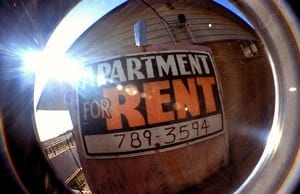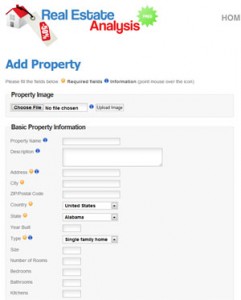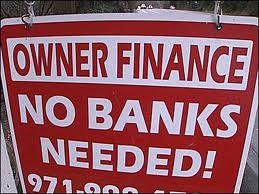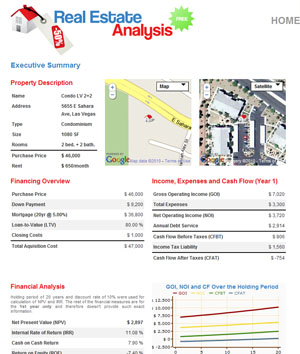8 Tips for Hiring the Best Property Manager
8 comments so far Even though I have already written the next post, for my calculations of the first year returns on my 2 properties (in Las Vegas and Phoenix), it happened that I am changing again a property manager in Las Vegas. When looking for a new one, I have read my old posts to remind myself what I should be asking them, but also I have read this good article at Biggerpockets blog. It can help you guys, who will need to find a good property management company for your investment property.
Even though I have already written the next post, for my calculations of the first year returns on my 2 properties (in Las Vegas and Phoenix), it happened that I am changing again a property manager in Las Vegas. When looking for a new one, I have read my old posts to remind myself what I should be asking them, but also I have read this good article at Biggerpockets blog. It can help you guys, who will need to find a good property management company for your investment property.
1. The first thing I always want to know is how many properties (units is a better measure) are they managing. This is followed up with how many employees are managing these units. Here is what I have found based on our experience building our property management capability internally and then handing the entire portfolio over to property managers: a trained employee with the right tools and proven processes can manage between 30 and 40 units – assuming the accounting function is not included. So, if you are qualifying a property manager and they have no employees and are currently managing 37 units and you want to hand them 7 more, how good do you think their service to your portfolio will be?
2. Do they own any rental properties themselves? For me this can be a deal breaker! Here is what I have experienced: while it may seem like a benefit for a manager to own properties because they can better relate to what an investor experiences, I see it differently. The way I see it is my properties and my tenants are in constant competition with the managers and their properties. If the manager has a vacancy at the same time you do, how can you know that your property will be filled first? You don’t!
3. A critical component in managing both properties and tenants is getting into those properties on a routine basis. As part of your discussions with prospective managers, you want to get a commitment from them how often they will conduct formal inspections of your properties. In some cases, managers will be very accommodating. In most, however, they will balk at this requirement or use it as a way to increase the fee they will be charging. I am not too impressed with property managers who believe that conducting routine property inspections is an extra – not part of their normal package of services. I would be very leery of this type of property manager.
Continue reading here:
http://www.biggerpockets.com/renewsblog/2011/02/25/hiring-best-property-managers/
How to keep track of your property’s operating data (incomes/expenses), simple and free
5 comments so farToday’s post is not providing anything revolutionary, and for some people may be almost unimportant. However in the previous articles here at “buying property in USA” blog, I promised to show you guys how I keep track of my property incomes, and expenses (and any other operation data and information) – in a simple and free way.
I know that there are various software solutions (most of them paid), which can provide you with a similar result, but for my needs (3 properties), it’s more than what I need. What I use is a simple excel spreadsheet, which I have developed over the first months of ownership of the first 2 properties. From both of the property management companies, I get property statements every month in a form of PDF documents, including all the numbers. However it isn’t easy to look for certain information in dozens of these PDF documents I have in my folder, and also I can’t add any notes in it.
Therefore I always rewrite the values from each monthly statement into my own spreadsheet tables. You can see an example of this table below (click to enlarge):
I have similar tables on separate sheets of the spreadsheet file, for each investment property. The columns are following:
- Month
- Rent Income
- Property Management fees
- Repairs
- HOA (Home Owner Association fees)
- Insurance
- Net Operating Income without insurance = reported by property management (NOI definition)
- Balance (staying at the property management account every month)
- Owner draw (check from the property manager)
- Tax (monthly portion only)
- Net Operating Income (including insurance and taxes) (NOI definition)
- Notes (my personal notes, explanation etc.)
- TODO (to do list)
This way, it makes it really easy to look and find out that: the major repairs were done in October, and the tenants haven’t paid full rent in January etc… [continue reading] Read the rest of this entry »
Real Estate Analysis FREE: New features!
2 comments so far As you all probably know, I am the author of a free property analysis tool called Real Estate Analysis FREE. I am happy to announce some new features which I have been developing in the past few months. As always, this tool is free for anybody and I will be just happy if more people will be using it, instead of paying the crazy amounts for the commercial real estate investment software. I am trying to make this tool better and better in my free time, so if you have some suggestions for new features or changes, just let me know, and I will try to add them in the new release! So are you wondering what is new in the second version of the real estate analysis free software?
As you all probably know, I am the author of a free property analysis tool called Real Estate Analysis FREE. I am happy to announce some new features which I have been developing in the past few months. As always, this tool is free for anybody and I will be just happy if more people will be using it, instead of paying the crazy amounts for the commercial real estate investment software. I am trying to make this tool better and better in my free time, so if you have some suggestions for new features or changes, just let me know, and I will try to add them in the new release! So are you wondering what is new in the second version of the real estate analysis free software?
I have been working on the following things:
- Optimizing the whole application to make it work and crunch the data faster, I have almost doubled the overall speed of the software!
- I have created new financing options – mainly the so called “Creative financing” – which includes balloon payments, interest only financing, refinancing after a certain amount of years.
- You can enter Rehab costs into your investment – this will be used only in the first year of operation, and you can choose if and how the rehabilitation will influence the value of the property (this is very useful for fixer upper strategy)
- Expenses and incomes can be now entered not only as annual values, but also as a percentage or monthly amount
- 50% Rule – introduced at BiggerPockets Forum, it’s a great way for investors to estimate the expenses and check the overall investment
- Social media sharing! Requested feature by some of the investors. Facebook, Twitter and Email sharing of the property analysis reports is available!
I have also added social sharing on the main page of Real Estate Analysis FREE, so people can easily share this tool among their friends on facebook and twitter. I want people to find out about this free app and so, if you like the tool, please press the facebook “Like” button, or “tweet” button – to tell about Real Estate Analysis FREE to your friends. You can even become fans of the facebook page. I would never ask for money for the tool, but this is something which would really help me to spread the word around. I appreciate it if you “Like” Real Estate Analysis FREE!
Visit: http://www.RealEstateAnalysisFREE.com
Btw I moved to Australia, I know that lot of you guys reading this blog are Aussies! 😉
Price-to-rent ratio and Gross Rental Yield in USA
14 comments so farAs I promised in earlier post at Buying Property in USA blog, I have calculated price to rent ratios and gross rental yield of all the US states. I am currently writing an article with more details how I exactly got the numbers etc. However for the most of foreign investors is interested mainly in this table:

Seller’s financing – my experience, process of buying property in Topeka
11 comments so far As I described in the last post at Buying Property in USA blog, I was quite lucky, because I found a great real estate agent, who presented me with a few investment properties, with possible seller’s or so called owner financing. I have read a lot of things about seller’s financing before, but it was still something really new for me. I had to offer and negotiate the terms before I could again buy house in usa.
As I described in the last post at Buying Property in USA blog, I was quite lucky, because I found a great real estate agent, who presented me with a few investment properties, with possible seller’s or so called owner financing. I have read a lot of things about seller’s financing before, but it was still something really new for me. I had to offer and negotiate the terms before I could again buy house in usa.
I knew that the seller was quite motivated to sell the property, since it was more than 180 days on the market. That was definitely quite a big advantage. Disadvantage on the other hand was that the seller still had an unpaid mortgage on the property, with quite high payments and she obviously wanted me to cover the payments fully.
First, I needed to get all the information possible about the property. I requested details about the leases of the tenants (4 of 5 of the units were occupied), the utility bills (seller was paying all the utilities – this was very important information, possible deal breaker), time period of major repairs (roof, hot water heater etc) and also the information about the owners underlying loan. Marta (my real estate agent) helped me with most of that.
Second, I had to put together an offer. It’s hard to calculate how much the terms of the mortgage matter, and therefore I created an excel spreadsheet, where I could test all different scenarios (various down payment, balloon length, interest rate and amortization periods). I had some kind of benchmark (70%LTV @ 6% 20y) and I have calculated Net Present Value of this financing. Then I was comparing all the other scenarios and I chose one with similar NPV (very good one for me).
Third, I put together the offer, with a closing date in the beginning of the month (2nd or 3rd). This is very important, especially for occupied multifamily properties. The trick is in the fact, that the rents (but also utilities) are always pro-rated. That means, if you close on the 2nd, you will get almost a full month of rent. However the mortgage payments are usually on the 1st of each month (or you make sure they are). So you will have all this extra money at closing, but your first payment will be almost one month from that date.
Then I sent in the offer and waited for the seller. We had a few rounds of negotiations, mainly because the seller wanted ARM (adjustable interest rate) and I wanted fixed. Her reasoning was simple – the underlying loan was ARM as well, and she wanted to be sure that I will be always able to cover it with my payments. In the end I have agreed on the 6% ARM, but at least I got 80% LTV (20% down only) and price under the listing one.
New Feature – Blog Post Notification!
2 comments so far Just a small update today at buying property in usa blog. I know that sometimes my posts were rather sporadic and it happened that I haven’t written anything for 2 months and then I was writing 3 articles in another month. Quite many people asked me to send them an email, once I write a new article, and therefore I have installed a new newsletter plugin on this blog. I am not planning to send a real newsletters though. I won’t be sending any spam or sale offers into your mailbox, just an update with a link to the new article about buying house in usa or property analysis, which I would write.
Just a small update today at buying property in usa blog. I know that sometimes my posts were rather sporadic and it happened that I haven’t written anything for 2 months and then I was writing 3 articles in another month. Quite many people asked me to send them an email, once I write a new article, and therefore I have installed a new newsletter plugin on this blog. I am not planning to send a real newsletters though. I won’t be sending any spam or sale offers into your mailbox, just an update with a link to the new article about buying house in usa or property analysis, which I would write.
So do not hesitate to subscribe if you want to get an echo about a new article on the blog!
To subscribe, just fill in the name and email in the “Newsletter” box in the right side-bar.
Buying investment property in Topeka, Kansas
7 comments so far As I have mentioned in the previous post here at Buying Property in USA blog, I had a chance to spend some time in Kansas last year. I started looking around for investment properties, mainly because of the proximity to my future-in-law family. I wanted to be able to use the travel cost as a business expense, and it seemed to be a good idea to purchase something here, also for the diversification. In the end I found out that the market here is surprisingly good for investments.
As I have mentioned in the previous post here at Buying Property in USA blog, I had a chance to spend some time in Kansas last year. I started looking around for investment properties, mainly because of the proximity to my future-in-law family. I wanted to be able to use the travel cost as a business expense, and it seemed to be a good idea to purchase something here, also for the diversification. In the end I found out that the market here is surprisingly good for investments.
The last visit to Kansas was just for two weeks. After checking some numbers, it seemed that it would make quite a bit of sense to look for a property in Kansas capital city – Topeka. I googled real estate agents in Topeka and decided to visit Remax Associates. I was incredibly lucky with my choice, because I met Marta Barron, a very professional agent, who actually specializes in the investment properties. It was so much easier to talk to somebody who understood about rental yields, return on investments and rehab costs. What more, she also had contacts to other people I needed – investment banker, property manager etc.
We had about 1 week, but she was more than willing to help. Even though I told her, that I have around $20,000 and would need financing to buy house in USA . She sent me to a friendly investment banker, where I spent over an hour, learning many valuable things, however not getting the financing.
In the end, this bank had no problem with me being a foreigner; the problem was simply the lack of American taxed income. I would need at least a 2-year history of positive American taxed income, to get some financing here. So I thought I would have to just wait some time extra.
I wrote that to Marta on Friday, and told her, that the only option for me is unfortunately to wait, or to get seller’s financing. I was leaving on Tuesday, so I wasn’t really counting on getting anything.
On Monday, Marta wrote me – that she called many sellers over the weekend and found 5(!) who would be willing to do seller’s financing with good terms! I was so surprised! I did quick calculations on the properties in my Real Estate Investment Software and picked two out the five. I had limited information regarding the operational data, but the most important was the price and the rents – which Marta helped me with. Also I filled in some basic financing (70% LTV @ 6%, 30y).
High rental yield markets in the USA
4 comments so far
I previously chose to buy Condominiums, because I thought I would have more maintenance and repair expenses on a single family house. That was a mistake, because first, I am paying very high HOA fees every month, which would easily cover roof repairs once in 5-10 years, etc. Second, I am paying a property manager, who would take care of the maintenance for me. The property managers are charging the same 10% of rents for a Condo or single family house (even though they have more work with single family houses). Also Condos tend to take longer to rent out.
Next thought was about the actual markets I chose. I looked into the biggest price-drop states in the country. Then I compared the rental yields and chose 3 markets: Nevada (Las Vegas), Arizona (Phoenix) and Illinois (Chicago). I purchased condos in the first two (Las Vegas and Phoenix). My vision was, to have positive cashflow and also I was hoping for huge appreciation – return to the prices of 2005-2006. Unfortunately, the positive cashflow is just breaking even in the end and the appreciation didn’t even start in these markets yet. In fact, in Las Vegas the median house prices went even a few percent lower.
That made me to think, maybe there are actually better markets to invest. Not markets, where we would expect double digit appreciation, but rather markets with high rental yields, where positive cash flow will create high return on investment, from year one.
I happened to be in Kansas two times this year, and have studied the market there a bit. Kansas real estate market hasn’t dropped 40% like in Nevada, but just around 5-10%. Therefore I never considered it before. On the other hand, it is a very healthy and stable market with a great rental yield (price to rent ratio).
Definition of Price to Rent Ratio
Price to rent ratio (P/R) is a great and simple calculation showing the attractiveness of a certain Real Estate market or area. It compares median house price and median rent in that market. This ratio actually says how many annual rents would have to be spent for buying an average house. Some markets with very high ratio (i.e. California P/R is 25) do not show such a good opportunity for an investment, because the return on investment would be most probably low. This ratio can help an investor to decide which market to invest in.
I have done a quick calculation of the price to rent ratio (rental yield) for Nevada and Kansas. For the price data, I have used Median Price Asked for Housing Units from Trulia and for the rent, I have used “Fair Market Rents” estimated by HUD, for section 8 tenants . I have taken a median of the 2-bedroom apartments as a benchmark and decreased them by 20%, because the section 8 rents are always higher than the real market rents. I do realize that these numbers are not totally accurate, but they are good enough for a comparison.
Price to rent index for Nevada
P/R = $142,500 / ($659.2 * 12) = 18.01
Price to rent index for Kansas
P/R = $48,500 / ($455.2 * 12) = 8.88
As you can see, the P/R ratio for Kansas is more than twice smaller (better). It actually means that an average house in Kansas cost approx. 9 years of average rents. Or it can take approx. 9 years to pay off this investment property from the rental income (this is a very rough estimation, taxes, financing, expenses, etc. isn’t included).
This whole article should just show the opportunities of investing in these high rental yield markets. These markets are especially great for long term (or forever) holding strategies, without high appreciation expectations. I will try to put together a table of the P/R ratio for all the states or possibly even some counties / metros and post it within a few weeks on Buying Property in USA blog.
Real Estate Analysis FREE
7 comments so far I am glad to finally announce my project I have been developing for almost a year now. I have developed a real estate investment software. A year ago, I was looking around for some free solutions, when doing real estate analysis of potential residential investment properties and I found out that the free solutions on the internet are really crappy. What more, when I reviewed the expensive paid online tools, they were having some major drawbacks as well! I have spent hundreds of hours on this project, but finally I can introduce it to you guys first – readers of my blog, that the work is complete and first version is available for you to test and use. This will always stay free for people. I have developed it mainly for myself anyway, but since I have spent so much time on it, I want people to use it too.
I am glad to finally announce my project I have been developing for almost a year now. I have developed a real estate investment software. A year ago, I was looking around for some free solutions, when doing real estate analysis of potential residential investment properties and I found out that the free solutions on the internet are really crappy. What more, when I reviewed the expensive paid online tools, they were having some major drawbacks as well! I have spent hundreds of hours on this project, but finally I can introduce it to you guys first – readers of my blog, that the work is complete and first version is available for you to test and use. This will always stay free for people. I have developed it mainly for myself anyway, but since I have spent so much time on it, I want people to use it too.
I have also spent quite lot of time on reviewing the other real estate investment software tools online, and I can proudly say that my software far exceeds the characteristics of its competitors.
The main features are:
- It’s totally free and always will be! ;o)
- It’s high user friendly – I am using latest programming techniques and languages – AJAX, flash, etc.
- It provides many different ratios and charts – but also the really sophisticated ones, like NPV, IRR etc
- If you register, you can save multiple properties and compare them together
- You can see the free property report online and also export it and save it as PDF (or email it)
So please don’t hesitate and go to RealEstateAnalysisFREE.com and try to analyze your potential property. It takes about 5 minutes! I will very appreciate any feedback from you guys – either in the comments here or on the Real Estate Analysis website – in the feedback area.
Thanks and I hope you will enjoy this one.. ;o)
Spring Efforts in getting financing in USA
6 comments so far Maybe the most important part of buying property in usa is actually getting a financing in the USA. If you followed similar path of acquiring property in USA, you have also founded an American LLC and probably bought a first property for cash. It was clear last year, when I was trying to get a usual mortgage that it won’t be the right solution for me.
Maybe the most important part of buying property in usa is actually getting a financing in the USA. If you followed similar path of acquiring property in USA, you have also founded an American LLC and probably bought a first property for cash. It was clear last year, when I was trying to get a usual mortgage that it won’t be the right solution for me.
However after talking to a few people including real estate agents last year, during my trip when I bought the two properties, I put my efforts in another way of getting financing for the investments. The product I was trying to reach is called: “Equity line of credit”. What does it mean?
Simply you own for example a property worth $100K. You bought it cash, so the whole property belongs to you. You want to invest in one more property. You will go to the bank and ask for equity line of credit, with the first property being your collateral. The bankers should check your profile and the property, and offer you for example equity line of credit for $60K. You can use these money or you don’t have to use all of them as well. Once you will use them, you will have to start paying it off at a certain interest rate conditions.
So this way you can buy the next property even without using any of your personal money.
So this was the theory. How does it look at the current financing market in the USA?
I spent almost 2 months this spring in Kansas and then in Las Vegas, going to various banks and trying to get some type of financing for a next investment. Unfortunately the situation in United States didn’t get so much better yet, and the banks are still really scared to borrow you money.
In Kansas, the smaller banks are pretty healthy. They would even consider doing that for me, but the problem they had was that the properties were too far away for them to manage. So in a case I wouldn’t be paying off the loan, and they would have to sell the property, it would be really difficult for them. They said they would consider a collateral property in the midwest area, but not in Las Vegas or Phoenix.
In the bigger banks (like Bank of America,..) which have branches in all the states, there are really strict conditions, and therefore they won’t even talk to you, if your company isn’t more than 2 years in profit or if you are a foreigner.
Then I went to Las Vegas, hoping to achieve this thing in the smaller banks there. However Las Vegas banks are in pretty bad shape. All of them are suffering and they simply don’t consider borrowing money with a property as a collateral.
It’s sad, but in the end I returned to Europe, without really having any good results.
The only possibility I have now I guess, would be sellers financing, but that’s totally different chapter.
Anyway, what are your experiences? Did you try to get financing in some of the states? Maybe somewhere the conditions are better? Please share your experience with me and other readers in the comments. Anything is appreciated!
